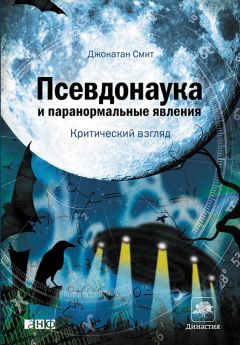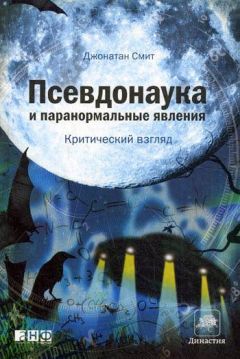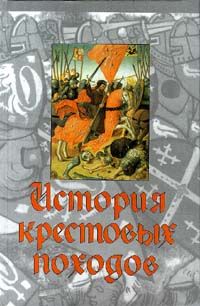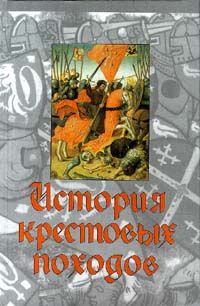Джонатан Смит - Псевдонаука и паранормальные явления: критический взгляд
Shor, R. E., & Orne, E. C. (1962). Harvard Group Scale of Hypnotic Susceptibility. Palo Alto, CA: Consulting Psychologists Press.
Sternberg, R. J. (2006). Cognitive psychology (4th ed.). Belmont, CA: Thomson/Wadsworth.
Stone, J. (2001). Behavioral discrepancies and the role of construal processes in cognitive dissonance. In G.B. Moskowitz (Ed.), Cognitive social psychology: The Princeton symposium on the legacy and future of social cognition (pp. 41–58). Mahwah, NJ: Erlbaum.
The Two Percent Company. (2005). Medium: The dubious claims of Allison DuBois. March. Retrieved April 1, 2008 from: www.twopercentco.com/rants/archives/2005 /03/medium_the_dubi_4.html
The Two Percent Solution. (2005). Retrieved April 4, 2009 from: www.twoper_centco.c om/rants/archives/2006/07/polar_opposites.html
Time (March 12, 1973). The magician and the think tank. Retrieved April 1, 2008 from: www.time.com/time/magazine/article/0,9171,944639,00.html?promoid = googlep
Turnbull, C. M. (1961). Some observations regarding the experiences and behavior of the BaMbuti Pygmies. American Journal of Psychology, 74, 304–308.
Vorauer, J. D. (2001). The other side of the story: Transparency estimation in social interaction. In G.B. Moskowitz (Ed.), Cognitive social psychology: The Princeton symposium on the legacy and future of social cognition (pp. 371–385). Mahwah, NJ: Erlbaum.
Vorauer, J. D., & Claude, S. (1998). Perceived versus actual transparency of goals in negotiation. Personality and Social Psychology Bulletin, 24, 371–385.
Wark, D. M. (2006). Alert hypnosis: A review and case report. American Journal of Clinical Hypnosis, 48, 291–300.
Watson, P. C. (1960). On the failure to eliminate hypotheses in a conceptual task. Quarterly Journal of Experimental Psychology, 12, 129–140.
Глава 8Ackil, J. K., & Zaragoza, M. S. (1998). Memorial consequences of forced confabulation: Age differences in susceptibility to false memories. Developmental Psychology, 34, 1358–1372.
Atkinson, R. C., & Shiffrin, R. M. (1968). Human memory: A proposed system and its control processes. In K. W. Spence & J.T. Spence (Eds.), The psychology of learning and motivation: Vol. 2. Advances in research and theory. New York: Academic Press.
Begg, I., & Armour, V. (1991). Repetition and the ring of truth: Biasing comments. Canadian Journal of Behavioral Science, 23, 195–213.
Begg, I. M., Anas, A., & Farinacci, S. (1992). Dissociation of processes in belief: Source recollection, statement familiarity, and the illusion of truth. Journal of Experimental Psychology, 121, 446–458.
Belluck, P. (1997). «Memory» therapy leads to a lawsuit and big settlement. The New York Times, Page 1, Column 1, November 6. Retrieved April 1, 2008 from: query.nytimes. com/gst/fullpage.html?res=9B04E7D91F30F935A35752Cl A961958260
Boyd, R. (2008). Do people only use 10 percent of their brains? Scientific American. Retrieved April 1, 2008 from: www.sciam.com/article.cfm? id = people-only-use-10-percent-of-brain&page= 1
Brown, A. S. (2004). The Deja vu experiences: Essays in cognitive psychology. East Sussex, England: Psychology Press.
Cutler, B. L., & Penrod, S. D. (1995). Mistaken identification: The eyewitness, psychology, and the law. New York: Cambridge University Press.
Echterhoff, G., I Iiggins, E. Т., Kopietz, R., & Groll, S. (2008). How communication goals determine when audience tuning biases memory. Journal of Experimental Psychology: General, 137, 3-21.
Gloor, P. (1990). Experiential phenomena of temporal lobe epilepsy: Facts and hypotheses. Brain, 113, 1673–1694.
Hasher, L., Goldstein, D., & Toppino, T. (1977). Frequency and the conference of referential validity. Journal of Verbal Learning and Verbal Behavior, 16, 107–112.
Hicks, J. L., & Marsh, R. L. (2001). False recognition occurs more frequently during source identification than during old-new recognition. Journal of Experimental Psychology: Learning, Memory, and Cognition, 27, 375–383.
Higgins, E. T. (1992). Achieving «shared reality» in the communication game: A social action that creates meaning. Journal of Language and Social Psychology, 11, 107–131.
Hyman, I. E., & Pentland, J. (1995). The role of mental imagery in the creation of false memories. Journal of Memory and Language, 35, 101–117.
Johnson, M. K. (2006). Memory and reality. American Psychologist, 61, 760–771.
Johnson, M. K., Hashtroudi, S., & Lindsay, D. S. (1993). Source monitoring. Psychological Bulletin, 114, 3-28.
Loftus, E. F. (1996). Eyewitness testimony. Cambridge, MA: Harvard University Press.
Loftus, E. F. (1997). Creating false memories. Scientific American, 277, 70–75.
Loftus, E. P., & Ketcham, K. (1994). The myth of repressed memory. New York: St. Martin’s.
McNally, R. J. (2004). The science and folklore of traumatic amnesia. Clinical Psychology: Science and Practice, 11, 29–33.
Moskowitz, G. B. (2005). Social cognition. New York: Guilford Press.
Osborn, H. F. (1884). Illusions of memory. North American Review, 138, 476–486.
Radford, B. (1999). The ten-percent myth. Skeptical Inquirer, 23, 52–53. Retrieved February 28, 2008 from: csicop.org/si/9903/ten-percent-myth.html
Schacter, D. L. (1996). Searching for memory — the brain, the mind, and the past. New York: Basic Books.
Skurnik, I., Yoon, C., Park, 1). C., & Schwartz, N. (2005). How warnings about false claims become recommendations. Journal of Consumer Research, 31, 713–724.
Squire, L. R. (2004). Memory systems of the brain: A brief history and current perspective. Neurobiology of Learning and Memory, 82, 171–177.
Sternberg, R. J. (2006). Cognitive psychology. Belmont, CA: Thompson.
Stevenson, R. L. (2004). Essays in the art of writing. Adelaide: Ebooks.
Sutton, J. (2003), Memory, philosophical issues about. In L. Nabel (Ed.), Encyclopedia of cognitive science, Vol. 2 (pp. 1109–1113). London: Nature Publishing Group.
Tulving, E., & Wayne, D. (1972). Organization of memory. Oxford: Oxford University Press.
Wade, K. A., Sharman, S. J., Garry, M., Memon, A., Mazzoni, G., Merckelbach, 1 (., et al. (2006). False claims about false memory research. Consciousness and cognition, 16, 18–28.
Wilson, K., & French, C. C. (2006). The relationship between susceptibility to lalse memories, dissociativity, and paranormal belief and experience. Persotuility and Individual Differences, 41, 1493–1502.
Zuger, B. (1966). The time of dreaming and the de ja' vu. Comprehensive Psychiatry, 7, 191–196.
Глава 94, G., & Saville, W. (1972). Anabolic steroids: The physiological effects of placebos. Medicine and Science in Sport and Exercise, 4, 124–126.
Bauseil, R. В. (2007). Snake oil science: The truth about complementary and alternative medicine. Oxford: Oxford University Press.
Beecher, H. K. (1955). The powerful placebo. Journal of the American Medical Association, 159 (17), 24 December, 1602–1606.
Beedie, C. J. (2007). Placebo effects in competitive sport: Qualitative data. Journal of Sports Science and Medicine, 6, 21–28.
Beedie, C. J., Stuart, E. M., Coleman, D. A., & Foad, A. J. (2006). Placebo effects of caffeine in cycling performance. Medicine and Science in Sport and Exercise, 38, 2159–2164.
Benedetti, F. (2009). Placebo effects: Understanding the mechanisms in health and disease. New York: Oxford University Press.
Benedetti Arduino C., & Amanzio, M. (1999). Somatotopic activation of opioid systems by target-directed expectations of analgesia. Journal of Neuroscience, 9, 3639–3648.
Benson, H. (1996). Harnessing the power of the placebo effect and renaming it «remembered wellness.» Annual Review of Medicine, 47, 193–199.
Bube, R. H. (1971). Man come of age: Bonhoeffer's response to the God-Of-The-Gaps, Journal of the Evangelical Theological Society, 14, 203–220. (iarroll, R. (2008). Book review: The cure within: A history of mind-body medicine (Anne Harrington). In The skeptic's dictionary. February 18. Retrieved June 13, 2008 from: skepdic.com/reluge/harrington.html
Clark, V. R., Hopkins, W. G., Hawley, J. A., & Burke, L. M. (2000). Placebo effect of carbohydrate feeding during a 4-km cycling time trial. Medicine and Science in Sport and Exercise, 32, 1642–1647.
Cobb, L. A., Thomas, G. I., Dillard, D. H., Merendino, K. A., & Bruce, R. A. (1959). An evaluation of internal mammary artery ligation by a double-blind technic. New England Journal of Medicine, 20, 1115–1118.
Cohen, N., Moynihan, J. A., &Ader, A. (1994). I’avlovian conditioning of the immune system. International Archives of Allergy and Immunology, 105, 101–106.
Dincer, F. (2003). Sham interventions in randomized clinical trials of acupuncture — a review. Complementary Therapies in Medicine, 11 (4), 235–242.
Poster, C., Felker, H., Porcari, J. P., Mikat, R. P., & Seebach, E. (2004). The placebo effect on exercise performance. Medicine and Science in Sport and Exercise, 36 (Suppl.), S171.
Gilovich, T. (1991). How we know what isn't so. New York: The Free Press.
Grady, A. M. (2007). Psychophysiological mechanisms of stress: A foundation for stress management therapies. In P.M. Lehrer, R.M. Woolfolk, & W.E. Sime (Eds.), Principles and practice of stress management (3rd ed.). New York: Guilford Press.
Hooper, R. (1822). Hooper's lexicon-medicum. New York: Harpers and Brothers.
Hrobjartsson, A., & Gatzsche, P. C. (2001). Is the placebo powerless? An analysis of clinical trials comparing placebo with no treatment. The New England Journal of Medicine, 344, 1594–1602.
Irwin, H. J., & Watt, C. A. (2007). An introduction to parapsychology. Jefferson, NC: McFarland.
Kaptchuk, T. J., Stason, W. B., Davis, R. B., Legedza, A.R. T, Schnyer, R. N, Kerr, C. E., et al. (2006). Sham device v inert pill: Randomised controlled trial of two placebo treatments. British Medical Journal, 332, 391–397.
Klopfer, В. (1957). Psychological variables in human cancer. Journal of Projective Techniques, 21 (4), 331–340.
Kong, J., Gollub, R. L., Rosman, I. S., Webb, J. M., Vangel, M. G., Kirsch, I., et al. (2006). Brain activity associated with expectancy-enhanced placebo analgesia as measured by functional magnetic resonance imaging. The Journal of Neuroscience, 26, 381–388.
Lang, W., & Rand, M. A. (1969). A placebo response as a conditional reflex to glyceryl trinitrate. Medical Journal of Australia, 1, 912–914.
Lehrer, P. M., Wool folk, R. M., & Sime, W. E. (2007). Principles and practice of stress management (3rd ed.). New York: Guilford Press.
Lidstone, S.C. C, &Stoessl, A. L. (2007). Understanding the placebo effect: Contributions from neuroimaging. Molecular Imaging and Biology, 9, 176–185.
Lilienfeld, S. O., Lynn, S. J., & Lohr, J. M. (Eds). (2003). Science and pseudoscience in clinical psychology. New York: Guilford Press.
Lilienfeld, S. O., Ruscio, J., & Lynn, S. J. (Eds.). (2008). Navigating the mindfield: A guide to separating science from pseudoscience in mental health. Amherst, NY: Prometheus Books.
Vladsen, M. V., Gotzsche, P. C, & Hrobjartsson, A. (2009). Acupuncture treatment for pain: Systematic review of randomized clinical trials with acupuncture, placebo acupuncture, and no acupuncture groups. British Medical Journal, March, 3115. Retrieved March 3, 2009 from www.bmj.com/cgi/reprint/338/jan27_2/a3115?maxto-show = &HITS= 10&hits= 10&RESULTFORMAT=&f’uIltext=sham+acupuneture& searchid= 1 & FIRSTINDEX=08cresourcetype = HWCIT
Vlaganaris, C. N., Collins, D., & Sharp, M. (2000). Expectancy effects and strength training: Do steroids make a difference? The Sport Psychologist, 14, 272–278.
VIoseley, B. J., O’Malley, K., Petersen, N. J., Menke, T. J., Brody, B. A., Kuykendall, D. H., et al. (2002). A controlled trial of arthroscopic surgery for osteoarthritis of the knee. The New England Journal of Medicine, 347 (2), 81–88.
Morcross, J. C, Koocher, G. P., & Garofalo, A. (2006). Discredited psychological treatments and tests: A Delphi poll. Professional Psychology: Research and Practice, 37 (5), 515–522.
Price D.D., Milling L.S., Kirsch, I., Duff, A., Montgomery, G. H., & Nicholls, S. S. (1999). Analysis of factors that contribute to the magnitude of placebo analgesia in an experimental paradigm. Pain, 83, 147–157.
R.obazza, C., & Bortoli, L. (1994). Hypnosis in sport: An isomorphic model. Perceptual and Motor Skills, 79 (2), 963–973.
Sapolsky, R. M. (2004). Why zebras don't get ulcers (3rd ed.). New York: Henry Holt.
Shapiro, A. K., & Shapiro, E. (1997). The powerful placebo: From priest to modern physician. Baltimore, MD: Johns Hopkins University Press.
Skinner, B. F. (1948). 'Superstition' in the pigeon. Journal of Experimental Psychology, 38, 168–172.
Skinner, B. F. (1974). About behaviorism. New York: Random House.
Smith, J. C. (2005). Relaocation, meditation & mindfulness: A mental health practitioner's guide to new and traditional approaches. New York: Springer.




